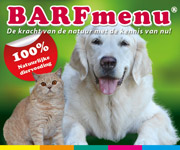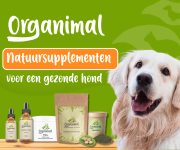Goeie vraag. Toevallig vroeg Henneke zich dit ook al af vorige week.
Eerst maar even wat quotes van het Internet:
Uit de weinige onderzoeken die zijn gedaan, komen besmettingspercentages naar voren van 0 tot 10%. De kans dat een potje honing is besmet, is dus niet groot. Maar omdat de gevolgen van een besmetting ernstig kunnen zijn, is het belangrijk geen onnodige risico’s te lopen. Het advies geldt om kinderen tot 1 jaar geen honing te geven om infantiel botulisme te voorkomen.
Er zijn 3 types van Botulisme: foodborne, wound, and infant botulism.
Compared to many other species, dogs are relatively resistant to the toxin, and as such botulism and dogs is quire rare. Almost all incidence of botulism in dogs is precipitated by the consumption of the carcass of a dead animal. Due to its rare occurrence in dogs, it can be difficult to differentiate botulism toxicity from other diseases and disorders. Ingestion of some poisons, nervous system infection or injury, Myasthenia gravis, drug reactions and stroke can mimic the symptoms of a botulism infection in dogs. Diagnosis often is based on owner observation of the dog, exposure to animal carcasses, and sometimes detection of the spores in fecal samples. Laboratory tests can also be employed to detect botulism in the blood of affected animals, but the delay in test results make testing more of a means of satisfying curiosity than of use to treating an animal in a timely fashion.
Scientists have discovered that clostridia can produce at least seven types of botulism toxin, identified as A, B, C, D, E, F, and G. Humans are usually affected by A, B, E, and very rarely F;
infants are affected by types A and B. Domesticated animals such as dogs, cattle, and mink are affected by
botulism C toxin, which also affects birds and has caused massive die-offs in domestic bird flocks and wild waterfowl. Botulism D toxin can cause illness in cattle, and horses succumb to botulism A, B, and C toxin. There have been no confirmed cases of human or animal botulism linked to the G toxin.
Read more:
http://www.answers.com/topic/botulism#ixzz21WFkYIwR
Drugs
Adults with botulism are treated with an antitoxin derived from horse serum that is distributed by the Centers for Disease Control and Prevention. The antitoxin (effective against toxin types A, B, and E) inactivates only the botulinum toxin that is unattached to nerve endings. Early injection of antitoxin (usually within 24 hours of onset of symptoms) can preserve nerve endings, prevent progression of the disease, and reduce mortality.
Infants, however, cannot receive the antitoxin used for adults. For them, human botulism immune globulin (BIG) is available in the United States through the Infant Botulism Treatment and Prevention Program in Berkeley, California. BIG neutralizes toxin types A, B, C, D, and E before they can bind to nerves. This antitoxin can provide protection against A and B toxins for approximately four months. Though many infants recover with supportive care, BIG cuts hospital stay in half, and therefore reduces hospital costs by 50% as well.
Aside from antitoxin, no drugs are used to treat botulism. Antibiotics are not effective for preventing or treating botulism. In fact, antibiotic use is discouraged for infants because dying bacteria could potentially release more toxin into a baby's system. Antibiotics can be used, however, to treat secondary respiratory tract and other infections.
====================
OK, wat ik begrijp: de bacterie Clostridium botulinum maakt in verschillende situaties verschillende gifstoffen aan. Het is dus niet de bacterie zelf die schadelijk is, maar het is de giffen die zij uit kunnen scheiden die schadelijk zijn. En er zijn dus verschillende type gifstoffen gedefinieerd: A, B, C, D, E, F, en G. Die ontstaan allemaal op eigen wijze. En in de darmen van een kind jonger dan 1 jaar kan de bacterie Clostridium botulinum type toxin A en B veroorzaken. En dat zijn nou net weer de twee gifstoffen waar de hond niet gevoelig voor is, niet ziek van wordt, de hond wordt ziek van toxine C (en deze toxine wordt door de Clostridium botulinum bacterie aangemaakt als ie terecht komt op een karkas van een dode vogel, de hond eet de dode vogel, krijgt toxine type C binnen en
kan daar ziek van worden). En bij mijn weten (tenminste, ik kan daar absoluut nergens data van vinden) kan er in de darmen van een pup door de bacterie Clostridium botulinum geen toxine type C ontstaan.
En dan geldt ook nog eens: "
Dogs, cats, and pigs are comparatively resistant
to all types of botulinum toxin when administered
orally" en dat komt niet van de eerste lullig website, dat komt van :
http://www.merckvetmanual.com/mvm/index ... /50707.htm
Ik heb dus helaas pindakaas geen website of antwoord voor je dat zo eenvoudig is als "Oh nee, Godsonmogelijk en wel hierom" maar als ik dit (en ik ben geen raketgeleerde) bij elkaar optel kan ik in ieder geval wel zeggen dat ik denk dat een pup geen toxine type C aanmaakt wanneer je hem rauwe honing geeft en er misschien toxine type A en B aangemaakt wordt maar dat pup daar dus niet gevoelig voor is. Ik durf zelf pup met een gerust hart rauwe honing te voeren.







